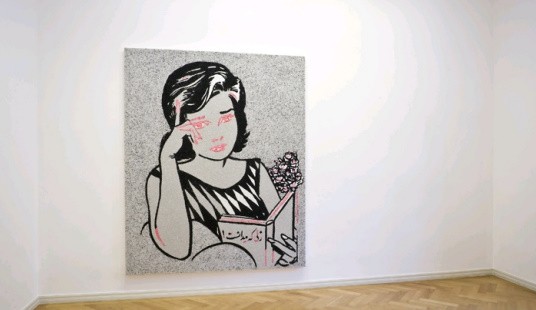Salzburg,
Mirabellplatz 2 Salzburg Austria
22 May 2010 - 17 July 2010
Farhad Moshiri's works are characterised by the hybrid quality of their content. Moshiri looks, with inspiration from the artistic tradition of Iran, at the aesthetics of western pop culture. The shiny, colourful surface of his works belies their deeper level, which questions the circumstances of everyday life in Iran. The works often have an ironic undertone - particularly in the series Freedom is Boring, Censorship is Fun, created jointly with Shirin Aliabadi some years ago.
In Salzburg, Farhad Moshiri is presenting new works. In their material aesthetics, these paintings and installations are in line with his earlier works. Although at first glance, they sometimes look childish, even infantile, based on simple sketches, a closer look shows them to be studies on the cultural complexity of Iran. He draws particular inspiration from the middle-class culture in his country.
"Farhad Moshiri's satirical pop aesthetic inverts deep-seated incongruities within the core of Iranian society by means of glorifying, romanticising and commodifying colloquial culture. Moshiri's creations are fabricated fantasies of 'promised goods' ready for mass consumption" (Vali Mahlouji, 2009).
"Farhad Moshiri's satirical pop aesthetic inverts deep-seated incongruities within the core of Iranian society by means of glorifying, romanticising and commodifying colloquial culture. Moshiri's creations are fabricated fantasies of 'promised goods' ready for mass consumption" (Vali Mahlouji, 2009).
Moshiri once said: "I live and work in a politically and socially complex country, which has for several decades been interpreted negatively by the West. The upswing of youth, for example, of the media and pop culture - in our culture this is a phenomenon which complicates our traditions, disorientating but also diversifying, creating a hybrid culture."
Farhad Moshiri was born in Shiraz in 1963. After studying during the 1980s at the California Institute of Arts in Valencia, he settled in Teheran in 1991. His work has been exhibited internationally since 1989.
